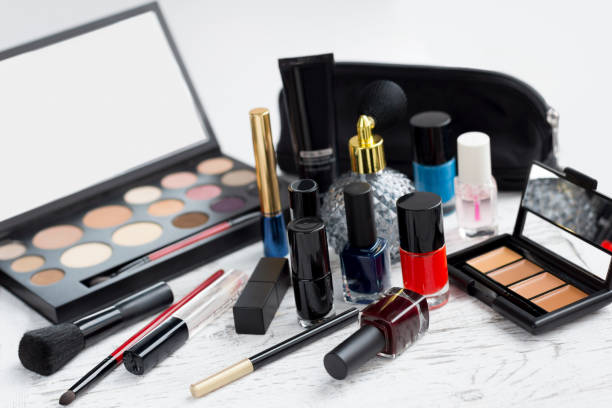The Art and Science of Packshot Photography: Elevating Product Presentation

In the competitive world of e-commerce, the visual presentation of products is more crucial than ever. Packshot photography, a specialized form of product photography, has become a cornerstone of effective online marketing strategies. It captures products in a way that highlights their features, attracts potential buyers, and ultimately drives sales. This guest post will delve into the essentials of packshot photography, including its importance, techniques, and tips for achieving the perfect shot.
What is Packshot Photography?
Packshot photography refers to the process of taking high-quality images of products in a controlled environment. Unlike lifestyle photography, which shows products in use, packshot photography focuses solely on the product itself, often against a neutral background. The goal is to present the product in the most appealing and accurate way possible, allowing potential customers to see exactly what they’re purchasing.

The Importance of Packshot Photography
- Visual Appeal: The primary function of packshot photography is to enhance the visual appeal of a product. High-quality images can make a product stand out in a crowded marketplace and grab the attention of potential buyers.
- Accurate Representation: Detailed, clear images help customers understand the product’s features and dimensions. This reduces the likelihood of returns due to unmet expectations, as buyers can make informed decisions based on the photographs.
- Brand Image: Consistent, professional packshot photography reinforces a brand’s image and reliability. High-quality images reflect positively on the brand and can contribute to building trust with customers.
- SEO Benefits: Well-optimized product images can improve search engine rankings. Properly labeled and tagged images can drive more organic traffic to a website, enhancing visibility and increasing the chances of conversion.
Essential Techniques for Packshot Photography
Achieving stunning packshot photography requires attention to detail and the right techniques. Here are some essential tips to elevate your product images:
- Lighting: Lighting is perhaps the most critical element in packshot photography. Soft, diffused light reduces harsh shadows and highlights, creating a clean and even look. Using a lightbox or a softbox can help achieve the desired lighting effects. Natural light can also be effective, but it’s essential to control its intensity to avoid overexposure.
- Background: A neutral background is ideal for packshot photography. White or light-colored backgrounds are commonly used as they ensure that the product is the focal point. Backgrounds should be seamless and free of distractions. For certain products, a colored or textured background might be appropriate to complement the product’s attributes.
- Camera Settings: Use a high-resolution camera to capture fine details. A tripod is essential for stability and to avoid camera shake, which can blur the image. Set the camera to a low ISO to reduce noise and ensure a sharp image. A small aperture (high f-stop number) increases the depth of field, keeping the entire product in focus.
- Product Placement: Position the product centrally in the frame to ensure it is the main focus of the image. For products with multiple angles or features, consider using multiple shots or a 360-degree view. Ensure the product is clean and free of blemishes before photographing.
- Post-Processing: Editing is an essential step in packshot photography. Use photo editing software to adjust exposure, contrast, and color balance. Retouching can help eliminate imperfections and ensure the product looks its best. However, avoid over-editing, as this can misrepresent the product.
Tips for Effective Packshot Photography
Capture the essence of your products with professional Packshot Photography Services by Cliik Studios.
- Plan Your Shots: Before starting a shoot, plan your shots carefully. Decide on the angles, lighting setup, and background based on the product’s features and the intended use of the images. Creating a shot list can help keep the process organized and ensure you capture all necessary images.
- Consistency is Key: Maintain consistency across all product images to create a cohesive look for your brand. Use the same lighting, background, and camera settings for all product shots to ensure uniformity.
- Invest in Equipment: High-quality equipment can significantly impact the outcome of your packshot photography. Invest in a good camera, lenses, lighting, and a tripod. While smartphone cameras can be effective, professional equipment often delivers better results.
- Consider Scale: For products where size is a key consideration, include items for scale, such as a ruler or common object. This helps potential buyers gauge the product’s dimensions more accurately.
- Focus on Details: Ensure that every detail of the product is captured clearly. Zoom in on intricate features and textures to provide a comprehensive view. This is especially important for high-end or technical products where detail is crucial.
- Optimize for Different Platforms: Different e-commerce platforms and websites have varying image requirements. Ensure your images are optimized for each platform’s specifications, including size and resolution. This will ensure that your product images look their best across all channels.
Common Mistakes to Avoid
- Poor Lighting: Inadequate lighting can result in dark, uneven images or harsh shadows. Ensure your lighting setup is well-planned and consistent to achieve the best results.
- Inconsistent Backgrounds: Using varying backgrounds can create a disjointed look. Stick to a consistent background to maintain a professional and cohesive appearance.
- Over-Editing: Excessive retouching can lead to unrealistic representations of the product. Aim for a balance between enhancing the image and maintaining its true appearance.
- Neglecting Product Presentation: A product that is not well-presented can appear unappealing. Ensure the product is clean and properly arranged before photographing.
Conclusion
Packshot photography plays a pivotal role in showcasing products effectively and professionally. By understanding and applying the principles of lighting, background, camera settings, and post-processing, you can create compelling images that attract and inform potential buyers. Remember, high-quality packshot photography not only enhances visual appeal but also builds trust and reinforces brand image. Whether you’re a seasoned photographer or just starting, mastering packshot photography can significantly impact your product’s success in the competitive e-commerce landscape.






